#calleryana
Text

Pyrus calleryana / Callery Pear
#Need to convince the husband to let me cut this bastard down#Pyrus calleryana#Pyrus#Rosaceae#callery pear#Pear#pears#Flowers#Nature photography#photographers on tumblr#durham#Durham NC#North Carolina#Home
2 notes
·
View notes
Text


#balboa park#museum of man#bell tower#architecture#bertram g goodhue#flowering trees#callery pear#pyrus calleryana#el cid campeador#statues#anna hyatt huntington#san diego
2 notes
·
View notes
Text
Tree stuff
Most trees should outlive you. If a landscaper tells you the lifespan of a tree is 10 years, they don't know what they're talking about.
Trees are free. Carefully comb over your yard for baby trees, especially in mid-spring!
Similarly, If you live near a gravel driveway or gravel parking lot, you can find baby tree sprouts that can be easily transplanted by gently removing the gravel bits from around the roots, wrapping the roots in wet paper towel, and transplanting to a large pot.
Do not pile up mulch around the base of a tree. You can mulch under the tree, but it should be a mostly flat layer, not a raised mound, and keep the mulch a few inches away from touching the trunk. Roots need some access to air or the tree will grow roots upward through the mulch, and the roots will slowly wrap around the trunk and strangle the tree to death. It's called root girdling and it is very sad.
Trees need friends!!! If possible, plant two or three trees instead of just one. Trees share nutrients through the mycorrhizal network and they protect each other from storm damage.
Always get a tree that is native to your area and suited to your local environment.
Growing an oak from an acorn is easy. Go to an area where there are oaks in the fall, and collect the acorns that have turned brown and whose hats have popped off. Get large pots at least 8 inches depth, and lay the acorns on their sides on top of the potting soil, then cover them with a layer of damp fallen leaves, and leave them outside all winter long. Just be sure to cover them with some wire mesh or something to protect them from squirrels
Please keep oaks and other large trees about 20 feet from any structure because they will grow huge. Websites will tell you to keep trees X distance away from "structures or other trees" but other trees can go as little as 6-10 feet apart whereas structures need to be like 15 feet away minimum, generally speaking
Prune the tree while it's dormant, NOT in the middle of summer!
If you happen to be from the Eastern United States, please consider getting an oak! They are keystone species and host plants for literally hundreds of insects. We have too many maples here too, so maybe consider a Sweetgum or Black Gum for pretty fall colors?
If you have a tree that's tied to a stake to keep it upright, get rid of that thing as soon as you can, particularly if there's zip ties holding it to the tree, because those can grow into the bark and kill the tree...
If your tree is dead, please consider cutting off the branches and leaving at least 6-10 feet or so of trunk standing. Dead tree snags like this are important nesting places for many birds and you might see a woodpecker
If you live in North America, whatever you do, do NOT get anything marketed as an "ornamental flowering pear tree." They're typically Pyrus calleryana, and they're virulently invasive
Bugs eating a few holes in the leaves of your tree? Good for them! (They aren't hurting the tree unless they're like, fully skeletonizing it, and they're just the caterpillars of butterflies and moths. Want Luna moths or Tiger Swallowtail butterflies? Let the caterpillars eat their dinner mmkay.)
Don't throw away the fallen leaves! Butterflies, moths, stick bugs, lightning bugs, ladybugs, and many other insects hibernate the winter in the fallen leaves. Use them as mulch for flower beds, compost them, or just leave them alone! You'll probably want to stop mowing after the leaves fall if you'd like to see bugs.
7K notes
·
View notes
Note
hey, I saw your response to a person in the lake st clair watershed. Please don't encourage people in the Great Lakes Basin to plant pear, depending on the species it can be invasive or just a nusiance non-native. Pear pushes out native trees (like willow and maple) and is not a food source for pollinators, meaning you won't get to see beautiful birds and butterflies on your property. Pear also stinks when it flowers. I would add to your suggestions to plant non-tree, native species like manoomin, marsh marigold, joe pyeweed, and black willow shrubs. Their local watershed organization should be able to assist them in selecting plants. And, Michigan Natural Features Inventory (part of MSU extension) has detailed lists of plants that grow in the basin which might be helpful depending on which side of the lake they are on.
(The post in question, for reference)
Thanks for sending this information! The pear thing was a bit of a personal bias on my part - I grew up not far from that area and we had several pear trees nearby, so I just had it in my head that pears grew in Michigan and didn't think to check if they were the best option. That's my fault for not double-checking, but I appreciate the correction.
I also second the idea of talking to an extension office if any followers have similar situations!
I also did a little research on pears in Michigan, and for any followers interested in the details, here's what I found: Michigan does not officially list any species of pear as invasive. Callery pear (Pyrus calleryana, sometimes called Bradford, Cleveland Select, or other variety names) is generally considered invasive in the Great Lakes area. However, the common pear (Pyrus communis) is not considered invasive, although it's definitely not native to the area either.
- Mod J
36 notes
·
View notes
Text
Prairie Days
Originally posted on my website at https://rebeccalexa.com/prairie-days/.
I’m in the middle of my fall peregrinations, currently staying with family in the Missouri Ozarks as my base of operations while I do some exploring of the area, and get up to my preferred flavor of trouble. Which, of course, includes volunteering.

Ozark Rivers Audubon Nature Center
I actually got to do a little back home at Willapa National Wildlife Refuge right before I left town. They’re doing some coast meadow habitat restoration at the South Bay Unit, and so a whole pile of us showed up Wednesday before last to spend a few hours digging up invasive plants cropping up in some patches that had been intentionally planted with natives like early blue violet (Viola adunca), yarrow (Achillea millefolium), and pearly everlasting (Anaphalis margaritacea). I confess I didn’t get any pictures because I was A) pretty preoccupied with the upcoming trip, and B) nothing makes me zone out more than sitting with a trowel digging up weeds for hours at a time. By the time I get back the “nice” weather (aka warm and sunny) will likely be done for the year, but I’m hoping for more opportunities to get back out there.
But that certainly wasn’t the end of my habitat restoration efforts for the month.
For the past couple of years, every time I come into Rolla, MO I stop at the Ozark Rivers Audubon Nature Center to see if they have any upcoming stewardship activities. They’ve done a beautiful job of restoring the remnant tallgrass prairie and oak savanna there and protecting the oak-hickory forest and that surrounds them, but invasive plants being what they are there are always more to be removed as the seed bank keeps new generations popping up.
This time around we were out in the prairie/savanna area with a bunch of folks from the officer training program down at Ft. Leonard Wood just down the highway. The objective was to remove as much of the autumn olive (Elaeagnus umbellata) as possible; this invasive shrub with a silvery underside to its green leaves can quickly shade out native prairie plants, and doesn’t offer local wildlife nearly as much food. Prescribed burns help knock it back, but some more resilient specimens manage to resprout, and of course there’s that pernicious seed bank in the soil.

Autumn olive
Most of these were much too large to simply pull up, so the most effective way to get rid of them was to go out in teams of two. One person uses loppers to cut the plant down as close to the ground as possible, and the other immediately dabs herbicide on the fresh stump, which then kills the roots and keeps the plant from regenerating. It’s a minimal use of the product when compared to spraying wide areas of foliage, and only treating the stump with a quick, targeted dab minimizes the chance of accidentally affecting surrounding native species. And since it doesn’t cause disturbance to the soil like digging would it’s less likely to stir up seeds that would then be even more likely to sprout.
I know herbicides are super controversial–they’re not my favorite thing either. But as I wrote in my chapbook Habitat Restoration: What It Is, Why It’s Important, and How to Get Started, judicious and careful use in habitat restoration is one of the few times I’m okay with it, and it’s about the only way to reliably get rid of some invasive plants permanently. Given that invasive species removal is one of THE best ways to make an ecosystem more resilient in the face of climate change, habitat restoration has to be a big priority now and going forward. While I am not ignorant of the environmental impact of routine overuse of herbicides in agriculture and yards alike, the targeted use of them in habitat restoration is definitely a “lesser of two evils” situation that deserves more nuance.
While autumn olive was the main target, we also managed to remove a few other pernicious invasives. Callery pear (Pyrus calleryana) was easy to spot with its leaves still bright green amid the various browns, golds, and reds of native vegetation. We also got rid of some privet (Ligustrum spp.), and a little Japanese honeysuckle (Lonicera japonica) winding its way through the meadow. While there’s still plenty to go around for the next volunteer crew, we did make a big dent in that area.

New England aster
It wasn’t just the invasive species in evidence, though; there were plenty of native plants to enjoy along the way. One of the most prominent was field goldenrod (Solidago nemoralis nemoralis), and while some had gone to seed others still had a touch of yellow. There was a splash of purple here and there from New England aster (Symphyotrichum novae-angliae), and delicate white snakeroot (Ageratina altissima) edged the treeline. Amid inland oats (Chasmanthium latifolium) and other native grasses, young northern red oaks (Quercus rubra) and white oak (Quercus alba) added splashes of scarlet. It was incredibly peaceful to be immersed in these beautiful species and more.
At a time when it’s all too easy to feel overwhelmed by the enormity of environmental devastation on multiple fronts, there is something empowering about getting my hands in the dirt, so to speak. No, removing some invasive shrubs from one remnant prairie won’t save the whole world. But it helps that ecosystem become more resilient, and gives the native species there a better chance. It also makes that place a better illustration of the grasslands that were much more common in this portion of the Midwest, and is an important reminder that it wasn’t always cornfields and cattle pastures.

Yarrow
On a microcosmic level, I just feel better after spending a few hours doing a little something good in the world. I felt better walking away knowing that native plants like this young yarrow I found beneath an autumn olive we removed will be more likely to thrive in the years ahead. I’ve absorbed some of the beneficial effects of being outside, too, and gotten a good bit of exercise at my own pace. And it’s good social time, too, in a setting that feels pretty darn comfortable, and we’re all united by a common interest in that moment. This is likely my last outdoor volunteer time of the year, but it was a great note to wrap things up on.
Did you enjoy this post? Consider taking one of my online foraging and natural history classes or hiring me for a guided nature tour, checking out my other articles, or picking up a paperback or ebook I’ve written! You can even buy me a coffee here!
#habitat restoration#invasive plants#invasive species#gardening#restoration ecology#ecology#herbicides#nature#environment#conservation#Missouri#Ozarks#prairie#tallgrass prairie#oak trees#oak#forest#wildflowers
34 notes
·
View notes
Text

Pyrus calleryana, or the Callery pear, is a species of pear tree native to China and Vietnam, in the family Rosaceae. It is most commonly known for its cultivar 'Bradford' and its offensive odor, widely planted throughout the United States and increasingly regarded as an invasive species.
#bradford pear trees smell bad? is this common knowledge? also i didn't know they were an invasive species#but that's not hard to believe
7 notes
·
View notes
Text

Callery Pear (Prunus Calleryana) Blossoms
#flowers#white flowers#pear tree blossoms#trees#nature photography#nature#photographers on tumblr#flower photography#photography#florjus
4 notes
·
View notes
Text
Callery Pear Tree Invasive Species
Callery pear trees (Pyrus calleryana), native to China and Vietnam, have been popular ornamental trees for almost 200 years. These trees were introduced to the United States in the 1800s and are often planted along streets and sidewalks because of their attractive form and coloration. This species is also known for its disease resistance (particularly fire blight resistance.) However, Callery pear tree is an invasive species, so much so that nurseries will no longer be allowed to sell the plant in Pennsylvania in 2024.

Callery Pear Tree Appearance
Callery pear has a distinctive appearance with crucial aspects that can help homeowners and plant health care experts quickly identify the plant.
Size: Callery Pear trees typically grow to around 16 to 26 ft tall, or approximately 5 to 8 meters, often with a conical to rounded crown.
Leaves: The leaves are oval-shaped and about 1-1⁄2 to 3 inches long, with a dark green color in early spring before the leaves turn yellow, orange, or red in the fall.
Flowers: The flowers are white and grow in clusters, have about five petals, and are about 3⁄4 to 1 inch in diameter.
Fruits: The fruits of the Callery pear are small, less than 3⁄8 of an inch in diameter. In addition, the fruits have a rugged, almost woody feel but are softened by frost, after which birds readily consume them.
Damage Caused by Callery Pear
Callery pear trees are invasive plants in many parts of the country and have damaged the landscapes and gardens of Pennsylvania homeowners. One of the significant reasons Callery pears cause so much damage is how the trees grow. These trees form dense thickets which displace native plants and animals. The dense thickets push out native trees or other plants that may compete with the Callery pear for water, soil, and space.
In addition, some cultivars (a type of cultivated plant that people have selected for desired traits), such as the ‘Bradford pear,’ are susceptible to storm damage, becoming disfigured or killed by strong winds and winter weather. So there is also a risk of the branches falling during strong winds and storms and damaging other things around the tree, like property or people.
What Makes Callery Pear an Invasive Plant
Like other species of plants we have discussed in this series, Callery pear has many qualities that enable the tree to spread quickly. One primary reason is the fruits discussed previously. The tree species produce large quantities of fruits that birds consume, and then those birds fly and relocate to new areas, passing the seeds in droppings into the soil, allowing new Callery pear trees to grow.
What makes Callery pear unique among the other invasive plant species we have talked about is the role of cultivars in spreading its population. Cultivars were initially bred to produce sterile fruit. However, different varieties can cross-pollinate, which results in viable seeds. When these cultivars grow close enough to each other to cross-pollinate, the trees produce fertile seeds that can sprout once dispersed.
Treating & Controlling Callery Pear
Callery pear can be challenging to control, but some methods exist for managing or removing the population from a landscape.
Small plants and their roots can be removed by hand, but larger trees require more extensive removal with specialized equipment, and herbicide application must be used as a follow-up.
Foliar herbicide applications can be done from around mid-May to early-mid October. These foliar treatments are ideal for landscapes with a low to moderate density of trees, which are less than 10 feet tall.
Basal bark treatments can be applied to the stems of a Callery pear tree throughout the year, with some exceptions (particularly during snow or rainy weather.)
As always, these control and treatment options require specialized, extensive knowledge of plant health care techniques. So call a plant health care expert if you need help with Callery pear in your landscape.
Contact Burkholder PHC for Expert Treatment of Plant Health Care Issues
The Callery pear tree invasive plant can overtake landscapes, and its dense thickets prevent native plant species from growing. To keep your landscape and native species healthy and able to thrive, we recommend a professional evaluation to help remove the plant and control any adverse effects. Our evaluation is free, and the proper treatments can help improve the health of your landscape. Contact Burkholder PHC today for a free consultation.
Blog is originally published at: https://www.burkholderphc.com/callery-pear-tree-invasive-species/
It is republished with the permission from the author.
0 notes
Link
"Pyrus calleryana 'Chanticleer'" è il nome botanico corretto per il pero Chanticleer, una cultivar della specie di pero Callery. Questo albero ornamentale
0 notes
Text
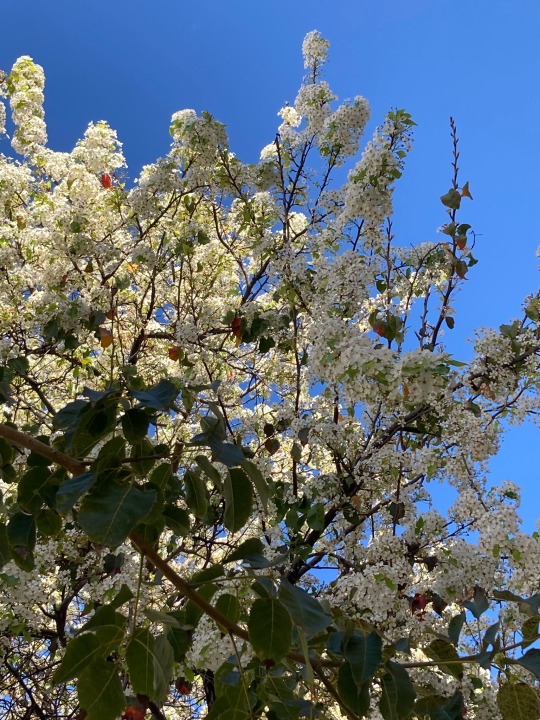

8 notes
·
View notes
Text
My opinions on invasive species are so complicated that no matter what opinion you have about them I will want to argue.
If you say "invasive species are a constructed category and not inherently evil" you unlock the part of me that rages about the impact of Bradford pears and honeysuckle bushes on my ecosystem.
If you say "Invasive species are bad and we have to get rid of them" you unlock the part of me that has a glowing admiration for Nature's ability to adapt and survive.
I don't really agree with "a species transported outside of its native environment is changing the ecosystem and that's bad" as a principle, because nature is constantly changing and there is no original unspoiled state of the ecosystem. However I don't trust this argument coming from somebody that hasn't spent hours and hours pulling wintercreeper or seen a forest understory sterilized by bush honeysuckle.
Oftentimes I believe that invasive species take over because a keystone species has been removed from the ecosystem. For example my hypothesis is that the destruction of the Canebrakes in the Southeastern USA made the region vulnerable to invasion.
I also think that the way the ecosystem is interacted with and managed by humans causes invasive species to invade
However ultimately I think each species and each individual region of Earth is its own unique case.
Kudzu for example is a food and fiber plant used and cultivated since ancient times in China. It is a mutualistic symbiont with humans, with both of our species strongly contributing to the survival and thriving of the other. Kudzu must be controlled by harvest and use by humans; since using it for food, medicine, and clothes has declined, it has begun to show invasive behavior IN CHINA, WHERE IT IS NATIVE
Dandelion is a weed that is mostly confined to ecosystems very heavily disturbed by humans, and it has strongly positive effects on those ecosystems. It is also a mutualistic symbiont with humans.
Amur honeysuckle, Lonicera maackii is an incredibly virulent invasive species in Southeastern USA forests, virtually destroying all other plant biodiversity in the understory where it grows. The cause of this is pretty simple, Arundinaria gigantea a keystone species was removed, and regular controlled burns were stopped when Native Americans were forced off their land. Thus there was a niche left gaping wide open in the ecosystem.
A. gigantea (river cane), our native bamboo, has the property of forming ridiculously dense clonal colonies in damp lowland areas. The Southeastern USA invasives that are majorly problematic seem to have similar habits. A. gigantea is also disturbance dependent, particularly loving fire, but these days you mostly find it in vacant lots and along fence rows. Similarly most of our invasives need a moderate disturbance level to take over. The trouble is that A. gigantea is nearly wiped out through much of its range, and rarely reproduces sexually, so it can't spread like the invasives can.
Each plant has to be understood as its own unique living creature with its own way.
I desperately want to learn about Pyrus calleryana in its native habitat and learn the ways of this plant, as I don't understand it yet...
1K notes
·
View notes
Text
Per il terzo anno consecutivo Daje de Alberi regala ossigeno, partecipazione e bellezza alla Capitale. Al II Municipio (Nomentano Quartiere Italia) l’Associazione di tutela ambientale, attiva in diversi Municipi, ha messo a dimora ventiquattro nuovi alberi dopo averne piantati duecento e soprattutto dopo averne curati e salvati migliaia del patrimonio pubblico esistente.
Ventiquattro tazze, sei specie di alberi, nove ceppi rimossi, tre mq di asfalto rimosso e suolo recuperato.
L’evento di riforestazione partecipata, con la cooperazione del Dipartimento Tutela Ambientale di Roma Capitale, è partito da piazza Lecce. Fra le numerose strade interessate, via Bari, via Catanzaro, via Ravenna, via Tommasini, via Udine, via Verona, via Ungarelli, via Boldetti.
Sei le specie di alberi nel rispetto della biodiversità e dell’albero giusto al posto giusto: Lagerstroemia Indica, Acero campestre, Pyrus Calleryana Chanticleer, Ligustrum Variegata, Koelreuteria paniculata, Cercis siliquastrum.
Un evento reso possibile dalle donazioni all’Associazione e caratterizzato da una grande partecipazione fra volontari, cittadini e alcuni commercianti nel segno di Condivide et Albera. Hanno testimoniato il loro sostegno all’impegno di Daje de Alberi la presidente del II Municipio, Francesca Del Bello, e dirigenti di Polizia di Stato e dell’Arma dei Carabinieri.
«Dove c'è cultura, passione e partecipazione c'è vera Riforestazione. Avanti tutta, daje, grazie ai donatori e alle donatrici». Questo l’incoraggiamento arrivato da Lorenzo Cioce, presidente dell’Associazione.
Ma il lavoro è appena cominciato per questi nuovi alberi. Come afferma il Prof. Ferrini, arboricoltore urbano di fama nazionale e internazionale, grande amico di Daje de Alberi, «non basta piantare alberi bisogna curarli».
Daje de Alberi si muove fin dalla sua nascita favorendo attività dal basso in linea con l’Agenda Onu 2030: obiettivo la vera riforestazione partecipata oltre gli slogan dei grandi progetti. Una strategia vincente culminata quest’anno con il prestigioso premio “La Città per il Verde”, organizzato dalla casa editrice Il Verde Editoriale di Milano. L’associazione Daje de Alberi è stato l’unico ente del terzo settore del Lazio ad essere insignito di questo riconoscimento.
www.dajedealberi.com;
www.facebook.com/dajedealberi;
www.instagram.com/dajedealberi
0 notes
Text
Kookaburra sits on the old cum tree (pyrus calleryana)
0 notes
Text
Featured Photo: Flower of the Day – The Callery Pear Tree
Featured Photo: Flower of the Day – The Callery Pear Tree
Today’s Featured Flower Photo of the Day: Callery Pear Tree
Here is today’s featured photo flower presentation. To let this year shine bright, I am featuring fine photos of flowers, continuing to honor the brighter side of life again this year. Today’s Flower of the day is the Callery Pear Tree.
The Callery Pear Tree, or the Pyrus Calleryana Bradford in the Rosaceae family. The Callery Pear Tree…
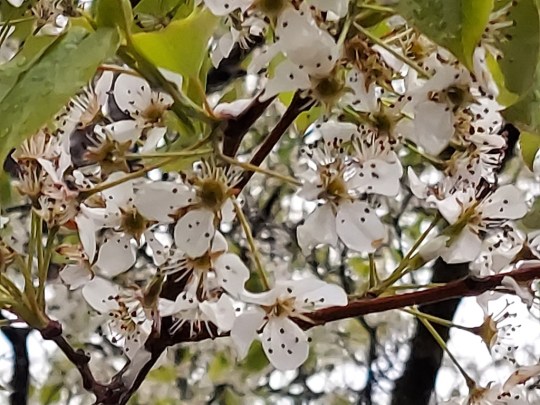
View On WordPress
0 notes
Text
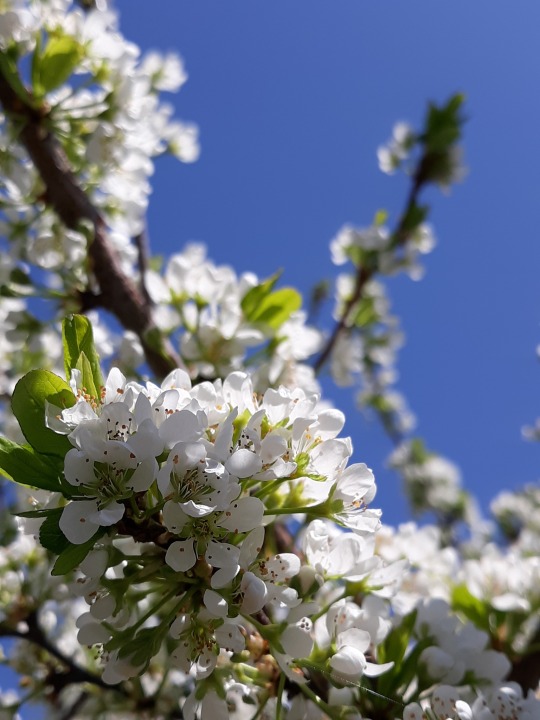
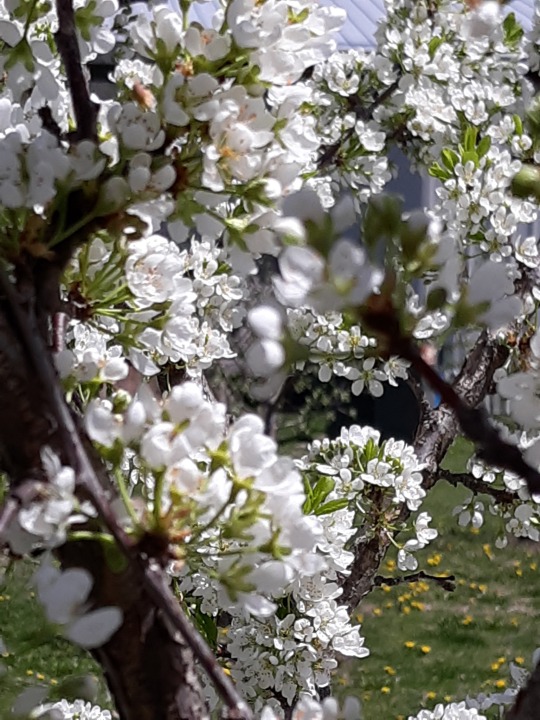
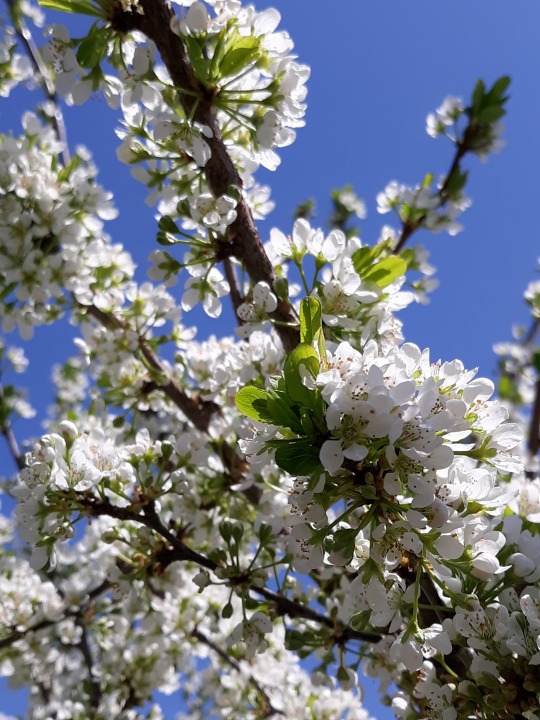
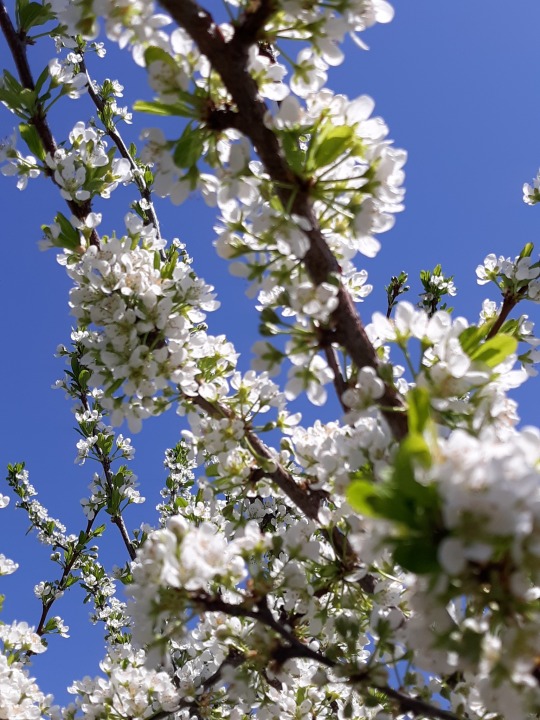

5/3/2020
Pyrus calleryana, or the Callery pear, is a species of pear tree native to China and Vietnam. It is most commonly known for its cultivar 'Bradford', widely planted throughout the United States and increasingly regarded as an invasive species. The inedible fruits of the Callery pear are small (less than one cm in diameter), and hard, almost woody, until softened by frost, after which they are readily taken by birds, which disperse the seeds in their droppings. (X)
#Pyrus calleryana#callery pear#pear#pear tree#pear blossoms#blossoms#flower blossom#tree blossoms#spring#beauty#this adventurous life#personal#adventure#explore#travel#explorer of the world#wisconsin#Sparta#lacrosse#Bradford
1 note
·
View note